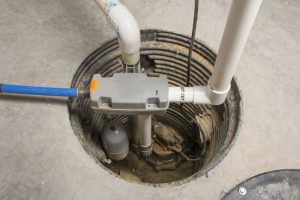 If you’re one of the many Utah homeowners with a sump pump in your basement, the reason it’s there is so that you aren’t risking hundreds or thousands of dollars in flood damages. Your home can certainly be prone to heaving flooding, or you might live in an area with a high water table. Either way, there’s never a bad time to think about installing a sump pump in your basement if you don’t already have one, or servicing your existing device. Keep reading to learn a few things you should know about sump pumps and the importance of Millcreek, UT sump pump services.
If you’re one of the many Utah homeowners with a sump pump in your basement, the reason it’s there is so that you aren’t risking hundreds or thousands of dollars in flood damages. Your home can certainly be prone to heaving flooding, or you might live in an area with a high water table. Either way, there’s never a bad time to think about installing a sump pump in your basement if you don’t already have one, or servicing your existing device. Keep reading to learn a few things you should know about sump pumps and the importance of Millcreek, UT sump pump services.
You Should Have a Battery Backup
Sump pumps, like any other appliance in your home, rely on a power supply to operate. However, what if a stormy night leaves you without electricity? This, compounded with the higher risk of flooding, can certainly leave you in a lurch.
Additionally, a batter backup is a good idea as an older sump pump can fail due to mechanical issues, or just natural wear and tear from age. When you test and inspect your system, be sure to check that the battery is fully charged. Some battery backup systems are designed to alert you when the battery is getting low.
You May Also Want a Water Backup Pump
Some backups are able to run using the pressurized water supply instead of a battery charge. While a battery backup system might only hold enough charge to last a couple of days, however a sump pump that runs using water from the pipes won’t run out steam. When it comes to speed, however, the water-powered backup system can struggle—an important factor to keep in mind.
Sump Pump Maintenance is Essential
Every few months, it would do you well to spend some time going over your sump pump to inspect for problems, and ensure that your sump pump is in good working order. This means conducting a thorough check for some of the problems that are common to sump pumps, such as:
- Electrical Issues: Any signs that the outlet isn’t working or there are frayed wires should be cause for concern.
- Debris Buildup: Check the sump pump’s outside drain as well as the screen in the pump to clear out any debris.
- Mechanical Issues: Often, a sump pump that won’t run is suffering from a stuck float. If this seems to be the case, you can probably adjust it easily. You might also need to readjust a tilted pump.
Additionally, you’ll want to test the sump pump every 1-3 months—this is as simple as filling water in the pit until it reaches the float and making sure that the pump activates. If you are unsure of any of the steps we mentioned or have other questions about the operation of your sump pump, don’t hesitate to give us a call!
Contact us today and learn more about sump pumps, including the different types that are available. See why our customers keep saying “I Love My Design Comfort!”


